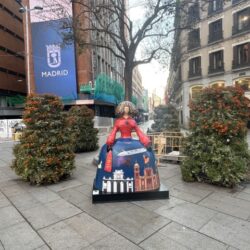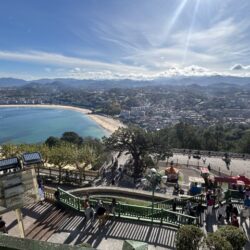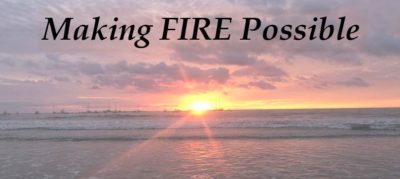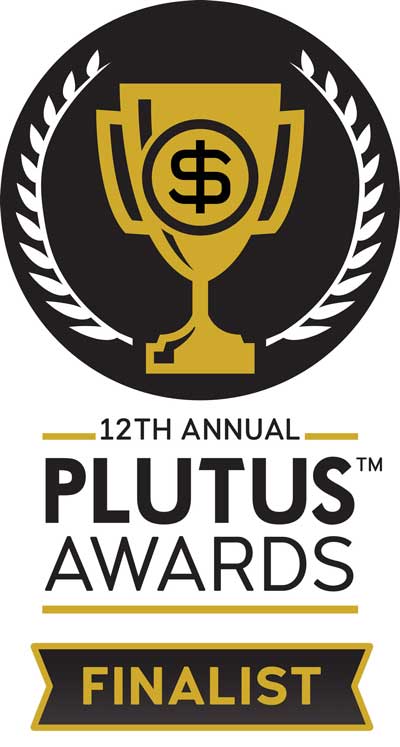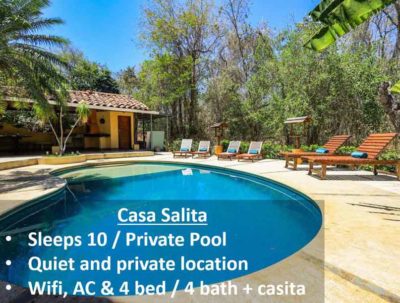Previous posts in this series: Planning, Driving West, One Week in Albuquerque
As written about previously, we planned a trip to Albuquerque to watch the total lunar eclipse. Reasons being: it was not visible in the eastern US, we tried and failed to visit Albuquerque last year, and I felt the general drier weather of the region would give us a better chance for clear skies and success in seeing the eclipse.
I’ve become a fan of the sun and the moon in recent years. We took a road trip to the Midwest in 2017 to see the total solar eclipse, and we’ve enjoyed sunrises on the beach in Jacksonville, sunsets on the beach in Costa Rica, and catching the full moon when we can.
Lunar eclipses are not all that rare, but at the same time, they don’t happen that often. You can count on 1 or 2 lunar eclipses a year, but they are not always total eclipses, and since each eclipse is only visible in parts of the world, sometimes when an eclipse occurs, you have to travel to see it. And that was the case with this one.
This particular eclipse would occur on the east coast of the US after moonset, so would not be visible there. The only way to see the full phase of the eclipse would be to travel to the mountain time zone or further west. In Albuquerque, the partial eclipse would start at 3:44am, the full eclipse would occur between 5:11am and 5:25am, and the moon set would occur at 6:03am. The re-emergence phase would occur during the moonset, which would be interesting to see, because the moon would be low on the horizon at that time.
The nice thing about heading to Albuquerque right after picking up our daughter from college, is that we would arrive quite a few days before the eclipse so that we could acclimate to the time change and high altitude. That was important given that the eclipse would begin by 4am. We arrived in Albuquerque on Thursday May 20, and the eclipse occurred in the early morning on Wednesday May 26, so we had a full 5 days to adjust. For me it was necessary – the high altitude, the 2 hour time change and the outdoor activities made it very hard to get through the day without a nap, but by May 26, we were fully adjusted.
Eclipse planning
Since the full portion of the eclipse would happen within an hour of the moon setting, I would need to find a place with a good view of the western horizon. As the moon (or sun for that matter) gets low to the horizon, it can be difficult to see because of houses, trees, building, etc. Of course clouds could be a big problem, but that would be out of our control.
Albuquerque itself is centered around the Rio Grande River, which is the lowest point of the city, altitude wise. The elevation rises as you head east and west from the river. To the east, it quickly rises, meeting the mountains that make up Sandia Peak. To the west, the land rises much more gradually, and once you get about 10 miles out to the west, the land becomes very flat, so you can also get a good view of the horizon.
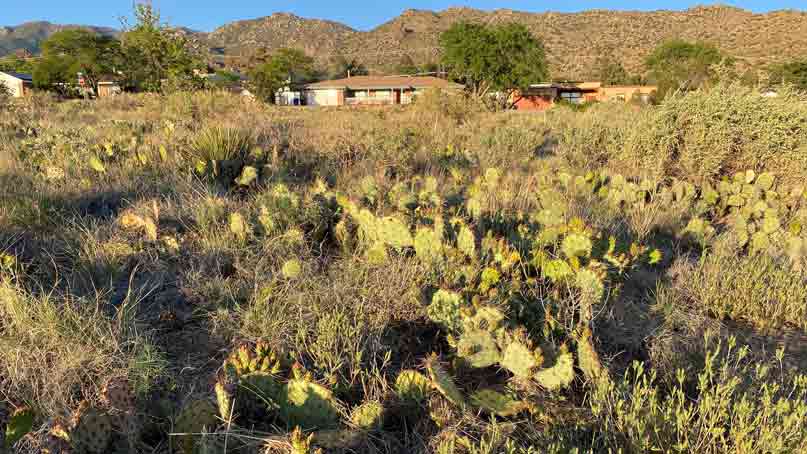
In the first few days of our trip, I explored various parks both on the west side of town, and up in the hills to the east. The park that had the most perfect view west was in the Supper Rock neighborhood and was called Supper Rock Park. The park itself was on a slope, and there was a sliver of a view to the southwest where you could almost see to the horizon, and right where the moon would set. That perfect spot in the park also had a bench, where we’d be able to sit and watch. The other nice thing about the park is that it was filled with prickly pear cactus, which I love.
Eclipse Viewing
One of the reasons I was excited about viewing the lunar eclipse in Albuquerque is that the location is well known for clear and sunny skies. I’ve seen estimates anywhere from 280 – 310 sunny days on average per year.
However, the first couple of days of our visit it was pretty cloudy, and while the skies cleared up nicely on Monday and Tuesday of that week, the forecast for Wednesday (eclipse day) morning was for clouds. But there was nothing to do but cross our fingers that the skies would be clear enough.
My alarm was set for 3:45am. I immediately headed outside to see that the skies were pretty clear and the moon was visible – great news! We got into the car and drove to the Supper Rock park to stake out our spot, and were there by 4:15. While the weather was chilly, it was fine for sitting outside. The bench at the park had a great view of the moon, and it was nice to see it slowly get smaller and smaller.
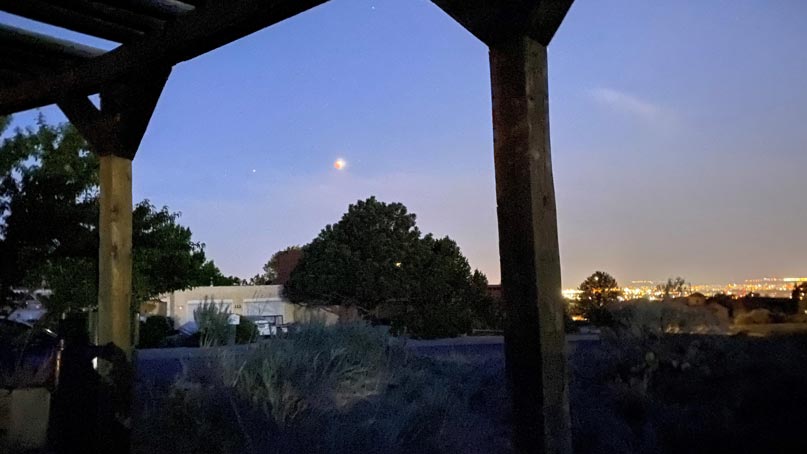
You can see in this photo that our spot had a great view of the horizon (on the right side), but the moon itself was setting into a giant tree. That just meant we’d have to move our vantage point to the right as the moon sank in the sky behind the tree.
However, it turns out it didn’t really matter. As the moon got to the point where just a small sliver was visible (probably about 15 minutes until the full eclipse phase), the moon sank behind a large bank of clouds, and that was the end of the show. In the photo above, you can kind of see the clear skies above the moon, and the hazy clouds just below.
We were close to seeing the full eclipse. The moon was probably 90% covered when it went behind the clouds. The photo at the top of the page shows what it looked like at that time, almost fully covered, with the covered part having a reddish hue to it.
It was a little disappointing we didn’t get to see the full phases of the eclipse – it would have been really cool to see the moon coming out of the full phase of the eclipse while it was setting. But we did get to see almost the entire first half of the eclipse, and for that I am grateful.
It’s not our only crack at this nut. The next lunar eclipse will be on Nov 18, and while not a full lunar eclipse, the moon will be 97% covered at the maximum. The next total lunar eclipse will occur early next year, on May 15. Both will be visible in both Jacksonville and New York City, so there will be no need to travel!

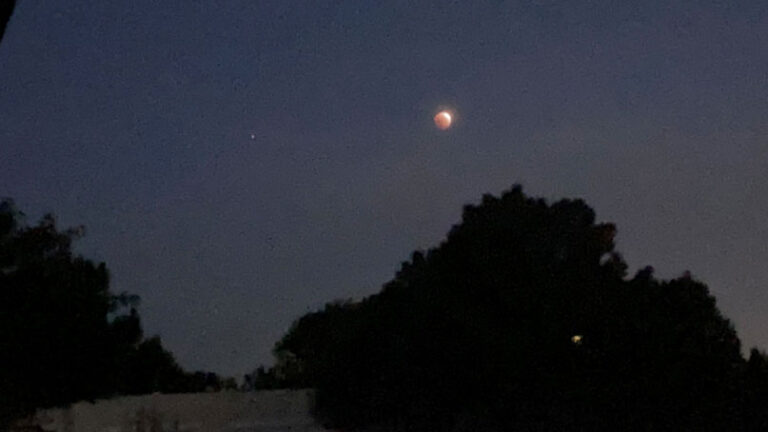
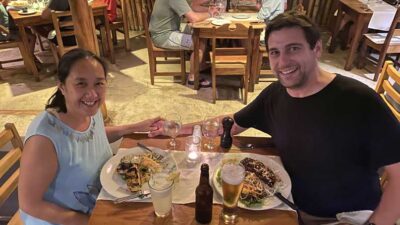 We are Scott and Caroline, 50-somethings who spent the first 20+ years of our adult lives in New York City, working traditional careers and raising 2 kids. We left full-time work in our mid-40’s for location-independent, part-time consulting projects and real estate investing, in order to create a more flexible and travel-centric lifestyle.
We are Scott and Caroline, 50-somethings who spent the first 20+ years of our adult lives in New York City, working traditional careers and raising 2 kids. We left full-time work in our mid-40’s for location-independent, part-time consulting projects and real estate investing, in order to create a more flexible and travel-centric lifestyle.  Financial independence and early retirement is not something we originally focused on, but over time realized it was possible. Our free report,
Financial independence and early retirement is not something we originally focused on, but over time realized it was possible. Our free report, 